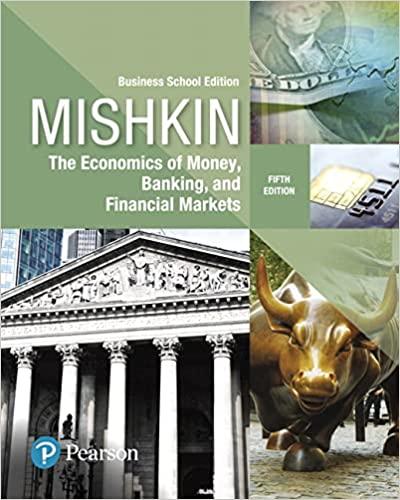
4. Assume an economy with a representative investor who maximizes a time separable power utility function: 14 = 1/(C) + JU(Cr+1+SOC-1+ ..., (13) where C-7-1 DC) (14) C is aggregate consumption and > > 0. Moreover, assume that consumption growth is lognormally distributed, such that E 4+1) = ? and Van AC +1) = of where 4 1 = log (a) [10 marks] Find the expressions for: i. the coefficient of absolute risk aversion: ii. the coefficient of relative risk aversion. What are the properties of these coefficients? Are they reasonable? Explain (b) [10 marks] Find the stochastic discount factor for this economy. (c) [20 marks] Derive the continuously compounded real risk-free rate. What is the elasticity of intertemporal substitution in this model? Comment on its properties. (d) (20 marks] Assume that risky asset returns are lognormally distributed and homoscedastic. Denote the conditional variance of asset's i log returns as Varro -1 = 0 and its covariance with the consumption growth as Con A2] = 0. Find the log risk premium on asset's i, i.e. (15) Show intermediate steps. (e) [20 marks] Using the historical data you found that the mean real ex- cess log return on the S&P 500 index over the rate on Treasury bills is 0.08 with a standard deviation of 0.1s and its covariance with log con- sumption growth is 0.003. Explain the equity premium puzzle and use the information on the historical data to illustrate it in the context of the lognormal power utility model. Word limit: 300) (F) [20 marks] Using the historical data you found that the mean log growth rate of consumption is 0.018 and its standard deviation is 0.033. The average real interest rate is also 0.018. Suppose that you decide to assume that the relative risk aversion coefficient in the lognormal power utility model is 32 and the time discount 2 in Eq.(13) is 0.98. Explain the risk-free rale puzzle and use the information on the historical data to illustrate it in the context of the lognormal power utility model. Word limit: 300] 4. Assume an economy with a representative investor who maximizes a time separable power utility function: 14 = 1/(C) + JU(Cr+1+SOC-1+ ..., (13) where C-7-1 DC) (14) C is aggregate consumption and > > 0. Moreover, assume that consumption growth is lognormally distributed, such that E 4+1) = ? and Van AC +1) = of where 4 1 = log (a) [10 marks] Find the expressions for: i. the coefficient of absolute risk aversion: ii. the coefficient of relative risk aversion. What are the properties of these coefficients? Are they reasonable? Explain (b) [10 marks] Find the stochastic discount factor for this economy. (c) [20 marks] Derive the continuously compounded real risk-free rate. What is the elasticity of intertemporal substitution in this model? Comment on its properties. (d) (20 marks] Assume that risky asset returns are lognormally distributed and homoscedastic. Denote the conditional variance of asset's i log returns as Varro -1 = 0 and its covariance with the consumption growth as Con A2] = 0. Find the log risk premium on asset's i, i.e. (15) Show intermediate steps. (e) [20 marks] Using the historical data you found that the mean real ex- cess log return on the S&P 500 index over the rate on Treasury bills is 0.08 with a standard deviation of 0.1s and its covariance with log con- sumption growth is 0.003. Explain the equity premium puzzle and use the information on the historical data to illustrate it in the context of the lognormal power utility model. Word limit: 300) (F) [20 marks] Using the historical data you found that the mean log growth rate of consumption is 0.018 and its standard deviation is 0.033. The average real interest rate is also 0.018. Suppose that you decide to assume that the relative risk aversion coefficient in the lognormal power utility model is 32 and the time discount 2 in Eq.(13) is 0.98. Explain the risk-free rale puzzle and use the information on the historical data to illustrate it in the context of the lognormal power utility model. Word limit: 300]







